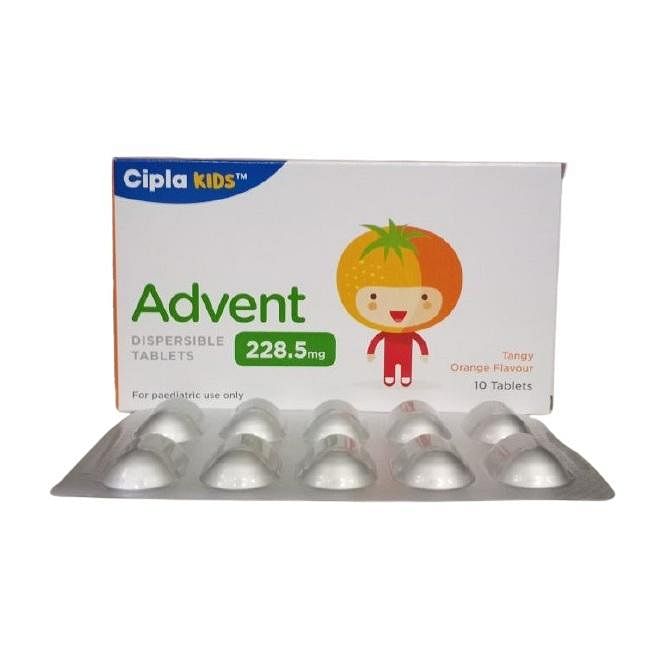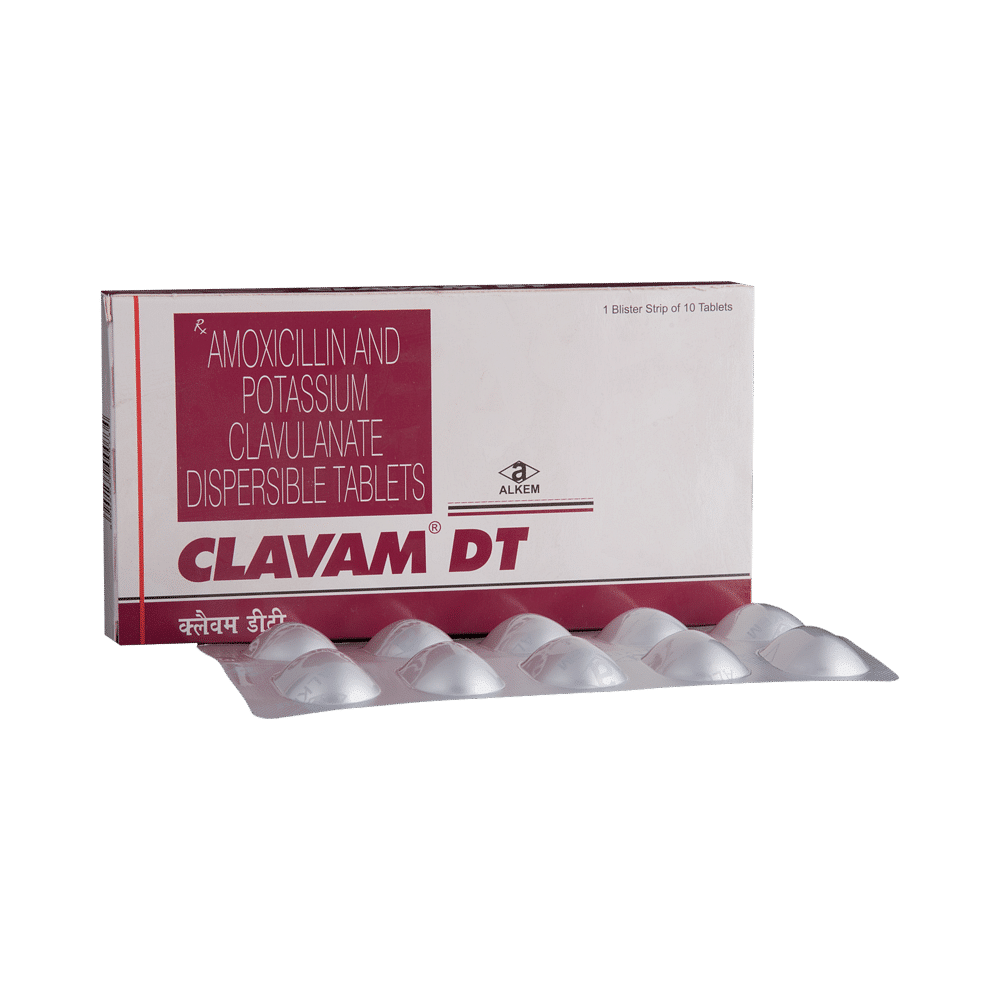
Cledomox 200 mg/28.5 mg Tablet DT
Manufacturer
Medopharm
Salt Composition
Amoxycillin (200mg) + Clavulanic Acid (28.5mg)
Key Information
Short Description
Cledomox 200 mg/28.5 mg Tablet DT is an antibiotic medicine that helps treat bacterial infections of the ear, nose, throat, chest, lungs, teeth, skin, and urinary tract.
Dosage Form
Tablet DT
Introduction
Cledomox 200 mg/28.5 mg Tablet DT is an antibiotic medicine that helps treat bacterial infections of the ear, nose, throat, chest, lungs, teeth, skin, and urinary tract. It is capable of killing bacteria that have become resistant to other therapies and thus also helps treat tuberculosis that is resistant to other treatments.
Directions for Use
Your child must complete the entire course of antibiotics. Stopping too soon may cause the bacteria to multiply again or cause another infection.
How it works
Cledomox 200 mg/28.5 mg Tablet DT is an antibiotic. It has two active agents amoxycillin and clavulanic acid. Amoxycillin works by preventing the formation of the bacterial protective covering (cell wall) essential for the survival of the bacteria. Whereas clavulanic acid serves a special purpose of inhibiting an enzyme (beta-lactamase) that is produced by resistant bacteria. This makes the combination of amoxycillin and clavulanic acid an effective line of treatment for many types of infections.
Quick Tips
Your child must complete the entire course of antibiotics. Stopping too soon may cause the bacteria to multiply again or cause another infection. Your child may have a bitter taste in the mouth after the intake of Cledomox 200 mg/28.5 mg Tablet DT. Eating citrus fruit or sipping plenty of water or fruit juice may help. Encourage your child to drink plenty of water in case diarrhea develops as a side effect. Never give Cledomox 200 mg/28.5 mg Tablet DT until and unless prescribed by the doctor. Do not give Cledomox 200 mg/28.5 mg Tablet DT to treat common cold and flu-like symptoms caused by viruses. Never save medicine for future illnesses. Check ‘expiry’ before giving Cledomox 200 mg/28.5 mg Tablet DT to your child. Stop Cledomox 200 mg/28.5 mg Tablet DT immediately if your child develops an itchy rash, facial swelling, or breathing difficulty.
Related Medicines

Advent 200mg/28.5mg Tablet DT

Awin Kid 200mg/28.5mg Tablet DT

Delpoclav 228.5mg Tablet DT

Penom Clav 200mg/28.5mg Tablet DT

Bi Clav Kid 200mg/28.5mg Tablet DT

Rzcv Kid Tablet DT

Curam DT 228.5mg Tablet

Clavam DT Tablet

Indclav 200mg/28.5mg Tablet DT

Mucoclav Kid 200 mg/28.5 mg Tablet DT
Frequently asked questions
Can other medicines be given at the same time as Cledomox 200 mg/28.5 mg Tablet DT?
Cledomox 200 mg/28.5 mg Tablet DT can sometimes interact with other medicines or substances. It is important to inform your child's doctor about all the medications your child is currently taking before starting Cledomox 200 mg/28.5 mg Tablet DT. Consult your child's doctor for guidance on administering any medicine to your child.
Can I get my child vaccinated while on treatment with Cledomox 200 mg/28.5 mg Tablet DT?
Generally, antibiotics do not interfere with vaccines or cause adverse reactions in a child who has been recently vaccinated. However, children receiving antibiotics should not receive the vaccine until they recover from their illness. Once your child feels better, the vaccine can be administered.
Which lab tests may my child undergo while taking Cledomox 200 mg/28.5 mg Tablet DT on a long-term basis?
Periodically, your child's doctor might monitor kidney and liver function tests if you are using this medication for prolonged therapy.
Can I give a higher than the recommended dose of Cledomox 200 mg/28.5 mg Tablet DT to my child?
Giving a higher than the recommended dose of this medicine can increase the risks of side effects. If your child experiences increased severity of symptoms, please consult their doctor for re-evaluation.
Can I stop giving Cledomox 200 mg/28.5 mg Tablet DT to my child when the symptoms are relieved?
No, do not stop giving this medication to your child unless the full course of treatment is complete, even if you feel better. Symptoms may improve before the infection is completely cured. Hence, continue administering the medicine according to the prescribed duration as it might still be showing beneficial effects.
Can the use of Cledomox 200 mg/28.5 mg Tablet DT cause diarrhea?
Yes, Cledomox 200 mg/28.5 mg Tablet DT may cause diarrhea. It is an antibiotic that kills harmful bacteria. Furthermore, the medication can affect beneficial bacteria in your child's stomach and might induce diarrhea. Encourage your child to drink plenty of fluids if they experience diarrhea. If diarrhea persists or you observe signs of dehydration like infrequent urination with dark-colored and strong-smelling urine, consult your doctor before administering any other medications.
Do all viral common colds result in secondary bacterial infection?
Most commonly, bacterial infections do not follow viral infections. It's crucial to seek professional advice from your child's doctor before prescribing antibiotics in a case of a viral infection, as this can increase the risk of side effects.
The mucus coming out of my child’s nose is yellow-green. Is it a sign of a bacterial infection?
Yellow or green mucus in the nose is not an indication that antibiotics are required. During a common cold, it's normal for mucus to thicken and change from clear to yellow or green. Symptoms often last 7-10 days.
Is there any sign which shows that my child needs immediate medical attention?
If your child experiences severe allergic reactions (breathing difficulties, skin rashes), gastrointestinal infections (diarrhea), or liver damage (weakness, paleness, vomiting), it is crucial to seek immediate medical attention. Though rare, these side effects require expert evaluation.


